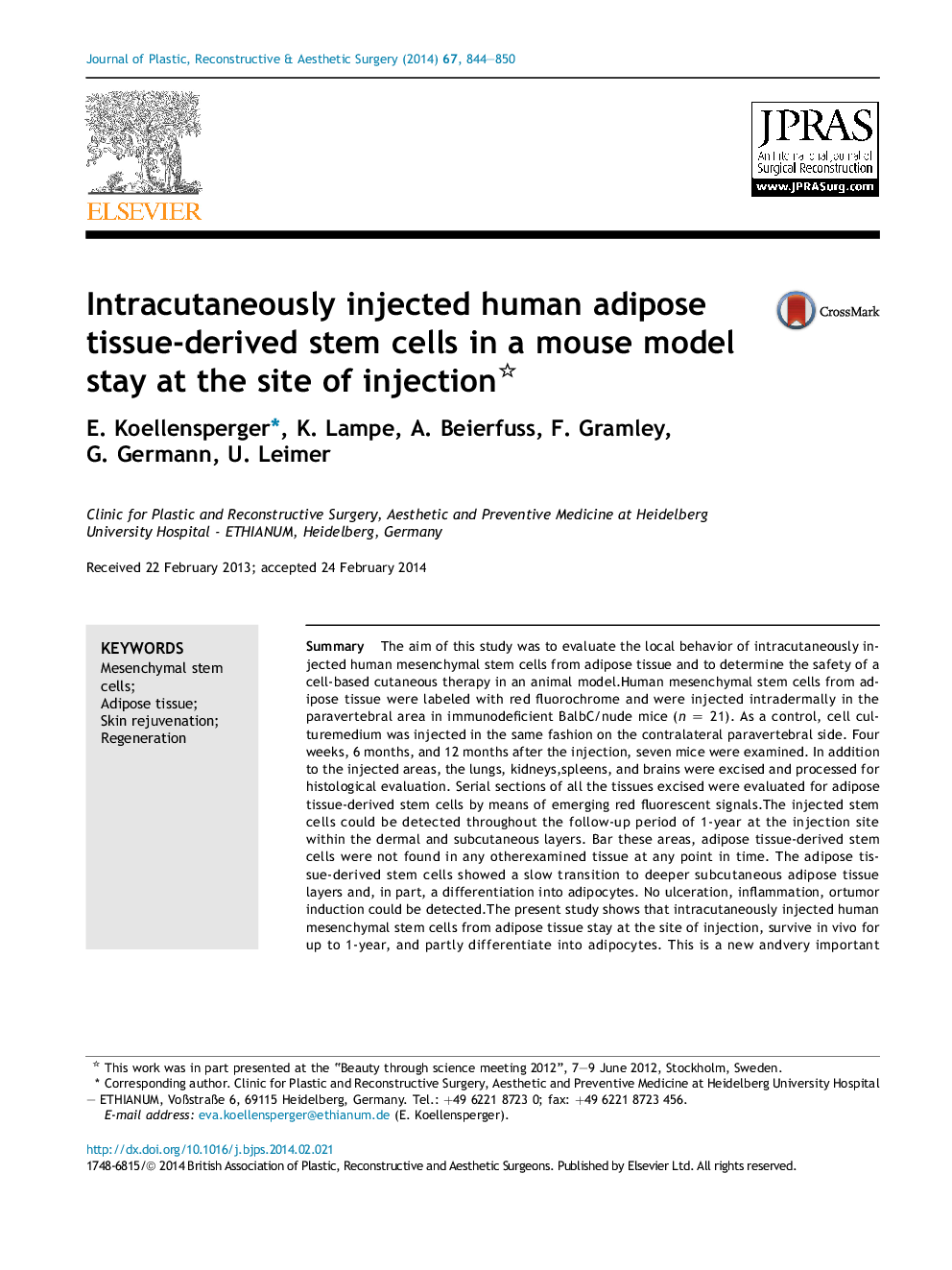| Article ID | Journal | Published Year | Pages | File Type |
|---|---|---|---|---|
| 4117352 | Journal of Plastic, Reconstructive & Aesthetic Surgery | 2014 | 7 Pages |
SummaryThe aim of this study was to evaluate the local behavior of intracutaneously injected human mesenchymal stem cells from adipose tissue and to determine the safety of a cell-based cutaneous therapy in an animal model.Human mesenchymal stem cells from adipose tissue were labeled with red fluorochrome and were injected intradermally in the paravertebral area in immunodeficient BalbC/nude mice (n = 21). As a control, cell culturemedium was injected in the same fashion on the contralateral paravertebral side. Four weeks, 6 months, and 12 months after the injection, seven mice were examined. In addition to the injected areas, the lungs, kidneys,spleens, and brains were excised and processed for histological evaluation. Serial sections of all the tissues excised were evaluated for adipose tissue-derived stem cells by means of emerging red fluorescent signals.The injected stem cells could be detected throughout the follow-up period of 1-year at the injection site within the dermal and subcutaneous layers. Bar these areas, adipose tissue-derived stem cells were not found in any otherexamined tissue at any point in time. The adipose tissue-derived stem cells showed a slow transition to deeper subcutaneous adipose tissue layers and, in part, a differentiation into adipocytes. No ulceration, inflammation, ortumor induction could be detected.The present study shows that intracutaneously injected human mesenchymal stem cells from adipose tissue stay at the site of injection, survive in vivo for up to 1-year, and partly differentiate into adipocytes. This is a new andvery important finding needed to safely apply therapies based on such stem cells in fat transplants in regenerative medicine.
